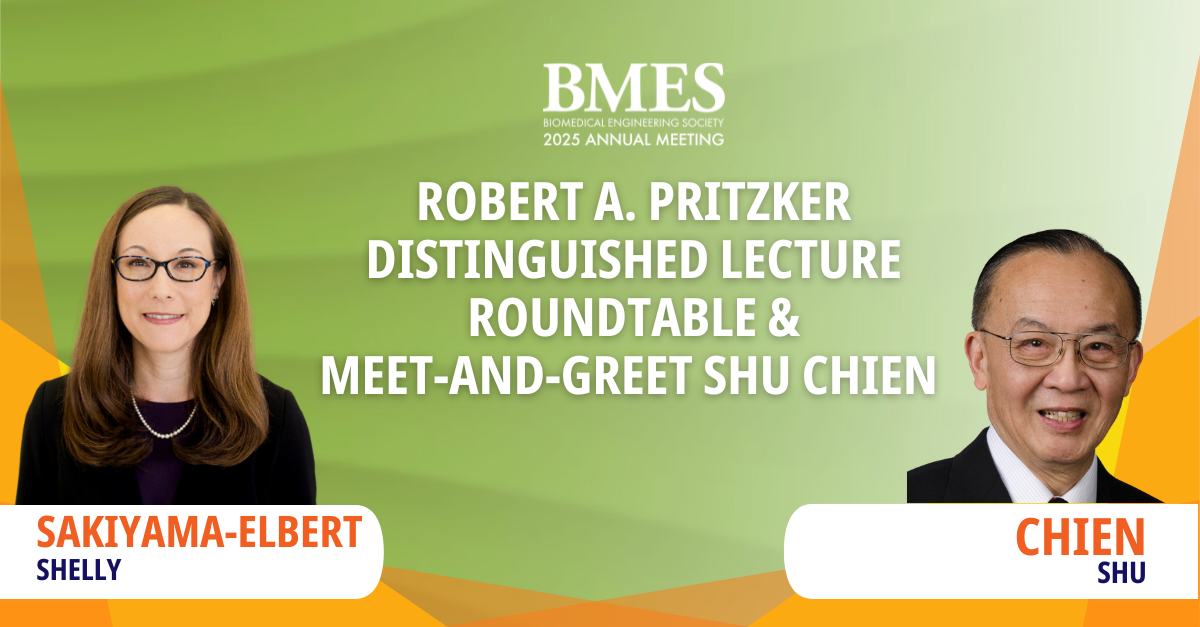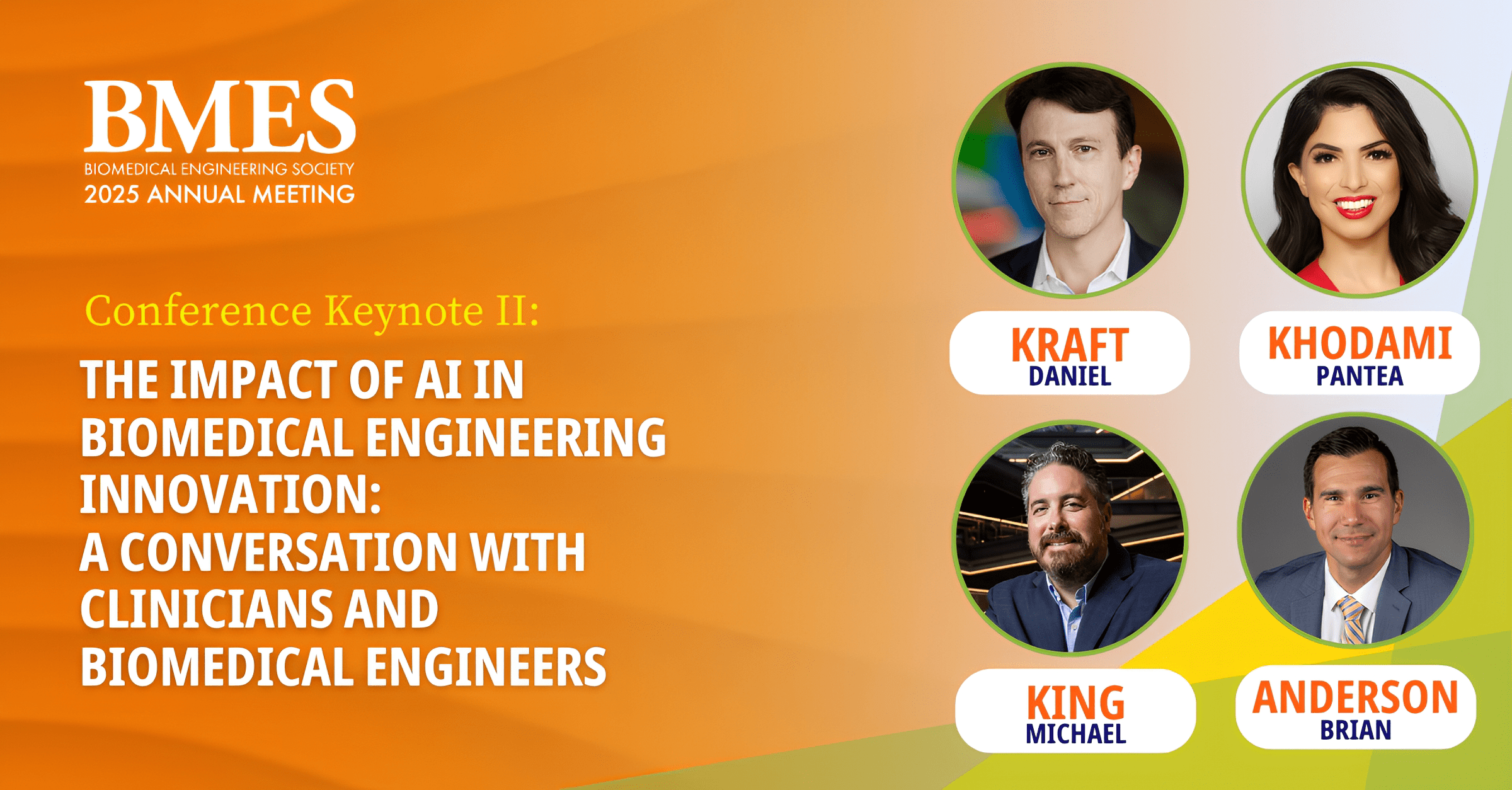Watch Now: Robert A. Pritzker Distinguished Lecture Roundtable & Meet-and-Greet Shu Chien
As the biomedical engineering community continues to evolve, the need for forward-looking dialogue around research, innovation, and funding has never...
BMES serves as the lead society and professional home for biomedical engineers and bioengineers. BMES membership has grown to over 6,700 members, with more than 110+ BMES Student Chapters, three Special Interest Groups (SIGs), and four professional journals.
Welcome to the BMES Hub, a cutting-edge collaborative platform created to connect members, foster innovation, and facilitate conversations within the biomedical engineering community.
Discover all of the ways that you can boost your presence and ROI at the 2024 BMES Annual Meeting. Browse a range of on-site and digital promotional opportunities designed to suit any goal or budget that will provide maximum impact.
Purdue University researchers have developed new technology to help stop the spread of foodborne illnesses by detecting them more efficiently.
The researchers developed a lanthanide-based assay coupled with a laser that can be used to detect toxins and pathogenic E. coli in food samples, water and a variety of industrial materials, according to a university article.
The two key features of the new technology are the incorporation of lanthanides and simple lateral flow paper-based assays, according to the article.
The Purdue team created a method for combining different heavy metals that when linked to antibodies can detect multiple agents in a single analysis. The research is published in the journal Analytical and Bioanalytical Chemistry.
“Our goal was to incorporate easily detectable elements into a paper-based assay which is low-cost and effective,” said J. Paul Robinson, the SVM Professor of Cytomics in Purdue's College of Veterinary Medicine and a professor of biomedical engineering in Purdue's College of Engineering. Robinson is a BMES member.
“Designing a technology that is both low-cost but also accurate and can detect multiple antigens simultaneously was a critical factor in our decision to work on this problem,” he said.
The group is evaluating the potential for fully portable use that would allow field use in virtually any environment.
The approach uses a high-powered laser pulse to obliterate a sample, while simultaneously collecting the spectral signature of the resultant emission. These signals are then compared with a database that translates the signals into an identification of the toxin or pathogen.
Read more HERE.

As the biomedical engineering community continues to evolve, the need for forward-looking dialogue around research, innovation, and funding has never...

As federal research funding landscapes continue to shift, many in the biomedical engineering community are facing growing uncertainty and widening...

Artificial intelligence is redefining the future of biomedical engineering—revolutionizing diagnostics, advancing personalized medicine, and...

A University at Buffalo spinoff company has received a $600,000 contract from the National Institutes of Health to pursue development of a vaccine...

Purdue University biomedical engineers have developed a handheld paper device that quickly and accurately detects a different strain of coronavirus,...

Virginia Tech University researchers are using clinical ultrasound images to train computers to detect Musculoskeletal injuries, such as small tendon...